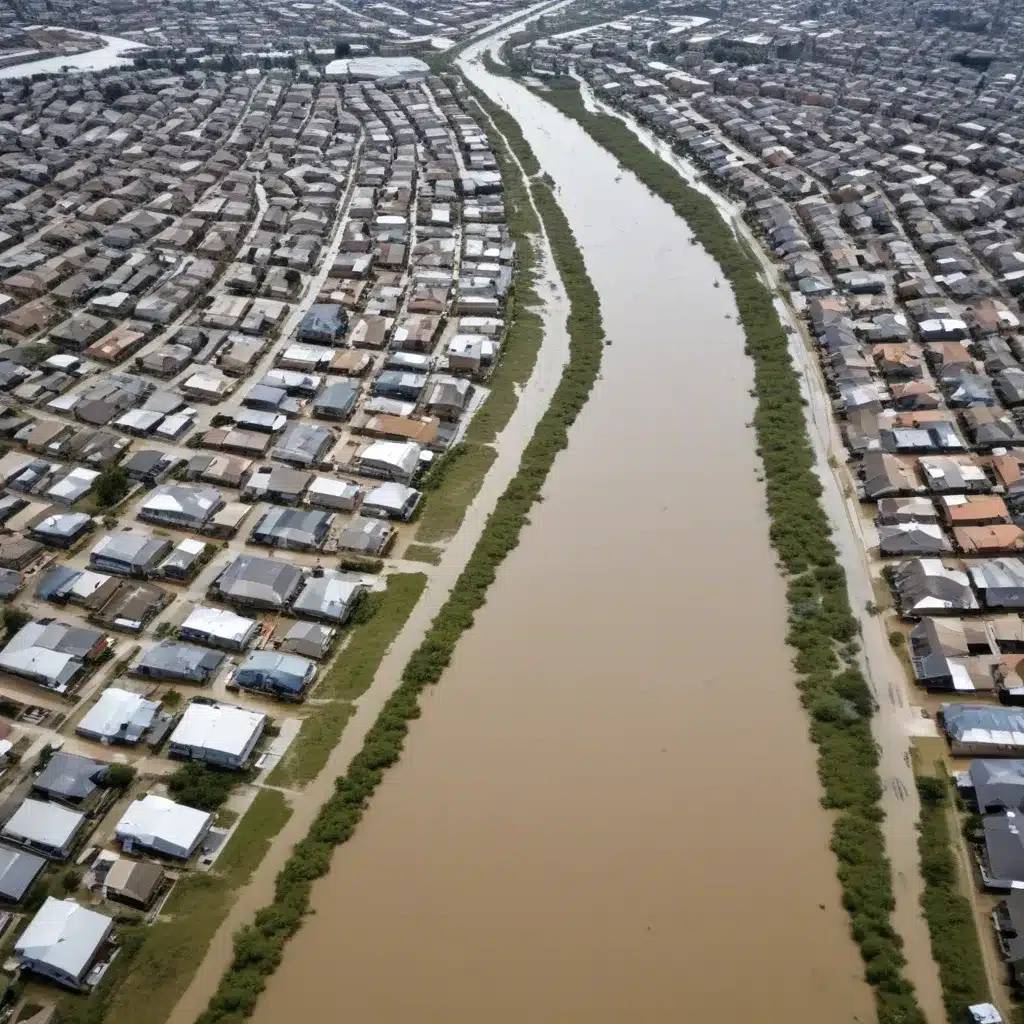
The effects of climate change are becoming increasingly pronounced, causing more severe disasters in cities around the world. We learned this the hard way… Flooding poses a significant threat in urban areas, impacting large populations and critical infrastructure. Conventional “keep floodwater out” strategies relying on hard engineering solutions have proven inadequate in managing the complexity of modern flood risks. As a result, flood resilience approaches underpinned by green infrastructure principles are gaining importance within broader spatial planning frameworks.
Toward Flood-Resilient Cities
Enhancing flood resilience requires a shift from resistance-based to adaptive-based strategies that blend both structural and non-structural measures. This integrated approach aims to improve a city’s capacity to withstand, recover from, and adapt to flood events. At its core, flood resilience planning recognizes that periodic flooding presents opportunities for communities to enhance their ability to cope with extreme floods.
Three key perspectives on urban flood resilience have emerged:
-
Engineering Resilience: A system’s capacity to return to a stable state after being disrupted by floods.
-
Ecological Resilience: The flexibility of natural systems to maintain robustness and transition to alternative stable states.
-
Socio-Ecological Resilience: The role of local communities in creating innovative responses to disturbances.
Resilient cities view disasters as opportunities to promote sustainability and growth, calling for multi-scale analysis of flood management. At the parcel or block scale, resilience considers building function, while at the city scale, it encompasses natural, physical, economic, social, and institutional dimensions.
The Flood Resilience Rose is a valuable management tool that helps actors and institutions in river and coastal zone management understand the complexity and interconnectivity of different flood resilience dimensions and scales.
Integrating Green Infrastructure for Flood Management
Traditionally, stormwater management relied heavily on gray infrastructure, such as culverts, sewer systems, and large-capacity drainage channels. However, the concept of “making space for water” and incorporating green infrastructure has gained prominence in recent decades.
Green infrastructure is defined as a network of natural areas and urban open spaces, such as urban forests, grasslands, and agricultural lands. This network helps preserve ecosystem functions and provides a variety of public benefits, including reducing the impact of urban heat islands, lowering building cooling needs, and minimizing runoff and untreated stormwater overflows.
The development of green infrastructure has evolved through three stages since the 1850s:
- Early Urban Parks: Focused on aesthetic and recreational values.
- Multifunctional Greenspaces: Integrated flood control, water quality, and ecological functions.
- Sustainable Stormwater Management: Emphasis on water-sensitive urban design and nature-based solutions.
Green infrastructure is now recognized as a core approach for realizing sustainable development and a more sustainable alternative to traditional hard infrastructure methods for flood risk management. By utilizing natural processes to protect, revive, and emulate waterways, green infrastructure provides nature-based solutions that not only preserve ecosystem values but also reduce flood risks.
Green infrastructure planning approaches are guided by four key principles:
- Integration: Coordinating green spaces with other urban systems, such as transportation and utilities.
- Connectivity: Creating a unified network of open and green spaces.
- Multifunctionality: Providing multiple benefits by combining different urban functions.
- Participation: Facilitating an open and inclusive planning process with diverse stakeholder involvement.
These principles should be considered within broader spatial planning frameworks to promote urban sustainability and resilience.
Governance Challenges and Opportunities
The management of urban flood resilience is complex, requiring coordination at multiple levels, including proactive policy entrepreneurs, clear guidelines and rules, and adequate resource allocation. Effective communication between scientists and practitioners, as well as the adoption of governance practices tailored to the existing physical, socio-cultural, and institutional context, are crucial for improving flood resilience.
However, several barriers hinder the effective implementation of green infrastructure and integrated water management strategies:
- Siloed Governance: Fragmented decision-making, unclear roles and responsibilities, and lack of integration between various organizations and the communities they serve.
- Financial Constraints: Inability of urban planners and decision-makers to allocate funds for green infrastructure improvements due to competing priorities and limited budgets.
- Institutional Inertia: Persistence of conventional engineering mindsets and an inability to address the complexities and spatial scales involved in green infrastructure planning.
To address these challenges, the concept of “green governance” has emerged as a promising approach. Green governance emphasizes collaborative processes, stakeholder engagement, a mix of top-down and bottom-up approaches, transparency, capacity building, and equitable decision-making.
Effective flood resilience governance requires:
- Diversifying flood risk management strategies
- Aligning policies to reduce fragmentation
- Involving both public and private actors
- Balancing legal certainty and flexibility
- Ensuring adequate financial and other resources
- Adopting normative principles to address distributional effects
The integration of stormwater management and green infrastructure strategies is becoming a globally adopted approach to urban water governance, aiming to improve water quality regulations and climate change resilience. This approach not only helps mitigate the effects of extreme weather events but also proves to be cost-effective.
Enhancing Flood Resilience through Integrated Planning
Flood resilience is an interdisciplinary domain that encompasses environmental science, urban planning, civil engineering, and social sciences. While the practical implementation and evaluation of strategies can be complex and context-dependent, the ongoing research and case studies provide valuable insights for advancing flood resilience through integrated urban water management.
By addressing the governance challenges and adopting green infrastructure principles, cities can create new opportunities for broader flood resilience. This requires a collaborative, multi-stakeholder approach that considers the potential benefits and trade-offs of various flood mitigation strategies, while also examining how these strategies can be integrated into comprehensive flood risk management frameworks.
As climate change continues to exacerbate flood risks, the need for innovative, nature-based, and resilient urban water management solutions has become increasingly urgent. Through the integration of green infrastructure, sustainable drainage systems, and collaborative governance, cities can enhance their ability to withstand, adapt, and transform in the face of flood-related challenges, ultimately building more resilient and sustainable communities.
Tip: Implement real-time monitoring to swiftly respond to flood risks















